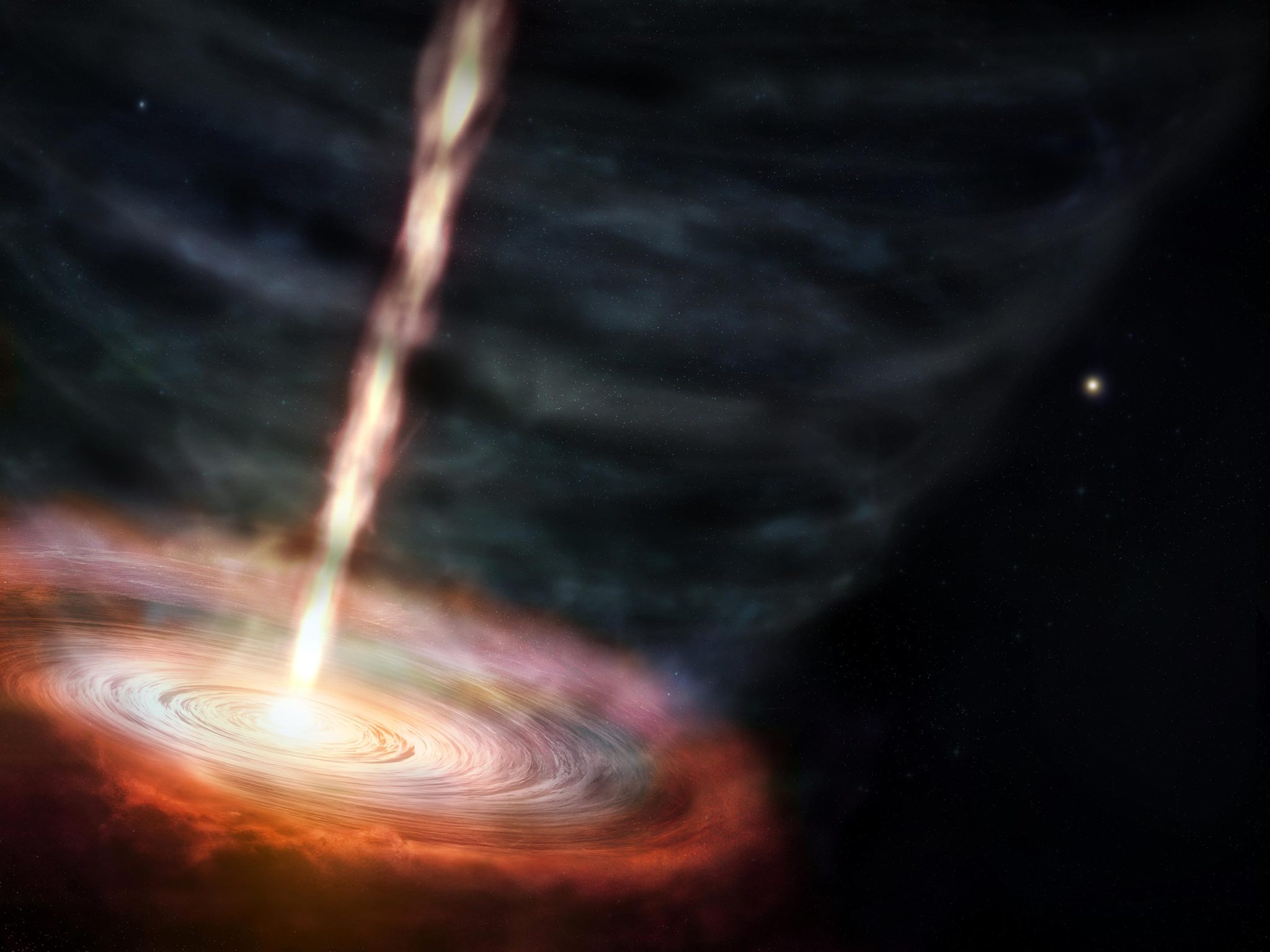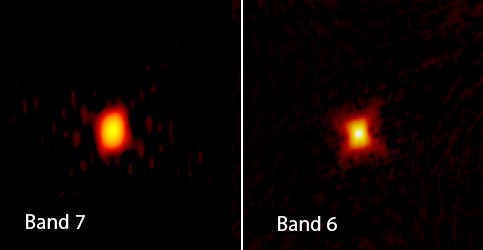Scientists studying masers— naturally occurring lasers that amplify microwave radio emissions— around the massive star MWC 349A discovered a 500 km/s jet of material launching out of the star’s gas disk from within the winds that are flowing away from the star. The bigger surprise is that the jet may be caused by magnetic forces. This artist’s conception shows a zoomed in view of MWC 349A and its surrounding disk of gas and dust that are being shaped by the winds and high-speed jet. Credit: ALMA (ESO/NAOJ/NRAO), M. Weiss (NRAO/AUI/NSF)
Atacama Large Millimeter/submillimeter Array (ALMA) to study the masers around oddball star MWC 349A scientists discovered something unexpected: a previously unseen jet of material launching from the star’s gas disk at impossibly high speeds. What’s more, they believe the jet is caused by strong magnetic forces surrounding the star. The discovery could help researchers to understand the nature and evolution of massive stars and how hydrogen masers are formed in space. The new observations were presented on January 9 in a press conference at the 241st meeting of the American Astronomical Society (AAS) in Seattle, Washington.
Located roughly 3,900 light-years away from Earth in the constellation Cygnus, MWC 349A’s unique features make it a hot spot for scientific research in optical, infrared, and radio wavelengths. The massive star— roughly 30 times the mass of the Sun— is one of the brightest radio sources in the sky, and one of only a handful of objects known to have hydrogen masers. These masers amplify microwave radio emissions, making it easier to study processes that are typically too small to see. It is this unique feature that allowed scientists to map MWC 349A’s disk in detail for the first time.
The massive star MWC 349A is one of the brightest radio sources in the sky. But, at 3,900 light-years away from Earth, scientists needed help to see what’s really going on, and in this case, to discover a jet of material blasting out from the star’s gas disk at 500 km/s. Previously hidden amongst the winds flowing out from the star, the jet was discovered using the combined resolving power of ALMA’s Band 6 (right) and Band 7 (left), and hydrogen masers— naturally occurring lasers that amplify microwave radio emissions, shown here in this ALMA science image. The revelation may help scientists to better understand the nature and evolution of massive stars. Credit: ALMA (ESO/NAOJ/NRAO), S. Prasad/CfA
“A maser is like a naturally occurring laser,” said Sirina Prasad, an undergraduate research assistant at the Center for Astrophysics | Harvard & Smithsonian (











